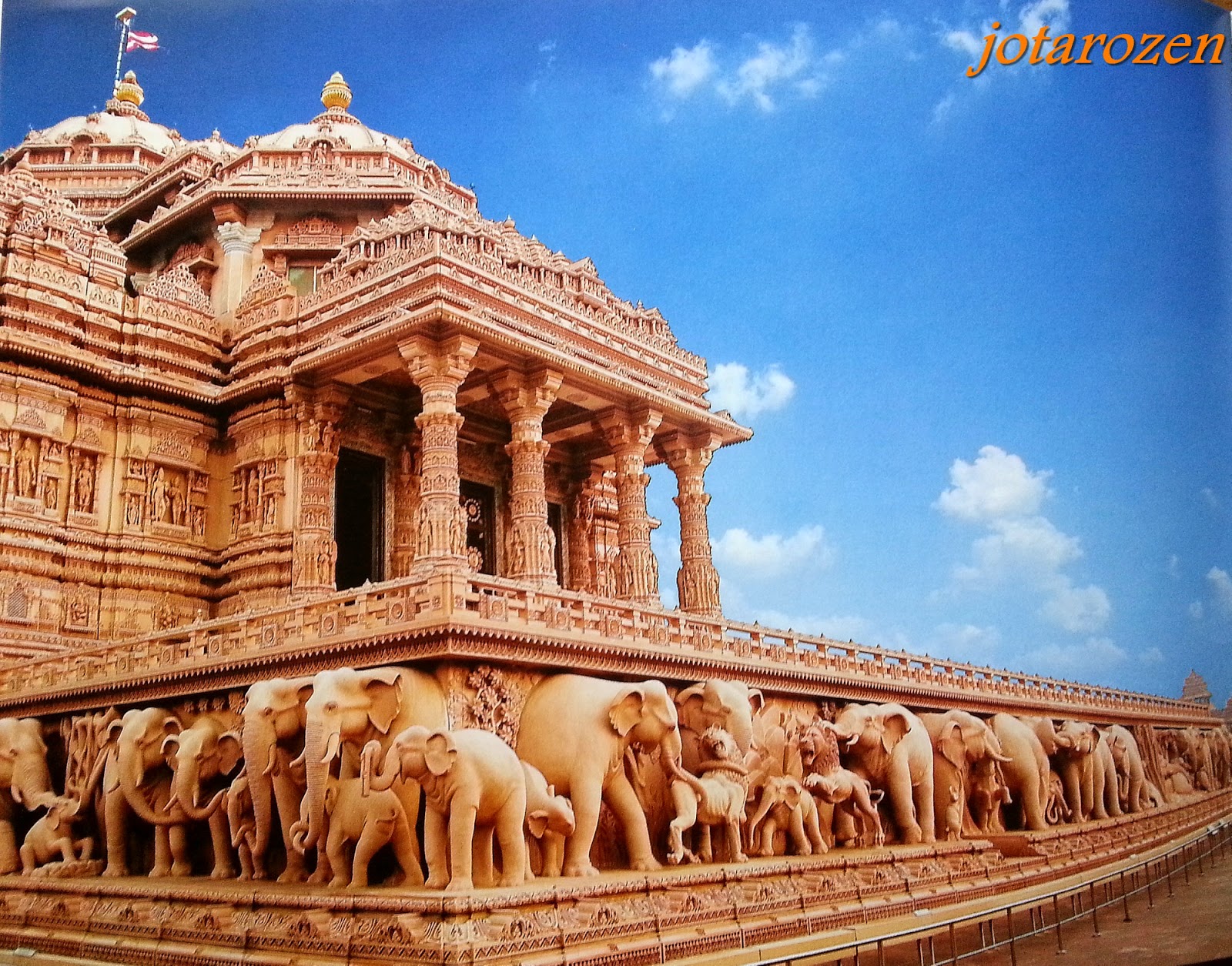You are at - Jotaro's Blog / Footsteps / India 2013 - Sites / Swaminarayan Ashardham, New Delhi, India
Footsteps - Jotaro's Travels
SWAMINARAYAN AKSHARDHAM
New Delhi, India - February 2013
(Note:
1. The photos used here are taken from a brochure purchased at the souvenir shop of the temple that I share here with you. As such it is not of the best quality. My advice is to go there physically and experience the place; there is so much more to feel and see while being there personally.
2. Security is very strict at the place. At the entrance gate hand-phones, cameras,video-cams and any recording devices are to be surrendered. No bags including back packs and ladies' handbags are allowed in.)
A BRIEF HISTORY OF SWAMINARAYAN
 |
| Sandstone statue of the young swami. |
To his devotees, he is an incarnation of god and during his lifetime he built six temples and hundreds of shrines. Prior to his death in June 1st, 1830, he was renown for reforms for women and the poor; and also for performing miracles. By the time of his death he had close to two million followers, presently his followers are estimated to be more than twenty million.
THE ENTRANCE
Built from red sandstone, the Ashardaham looks very grand. Entry is through two entrance gates called the Peacock Gates, with the the main temple building sitting further in at the centre.
Closer view of one of the gates.
A detail look of the intricate carvings on the gates; 869 peacocks carved in various poses adorn each gate.
MAIN TEMPLE BUILDING
Reflections onto one of the two pools at each side.
A splendid night view of the main temple building.
View from one of the gardens, showing many of the mini-pavilions that ring the building.
View from on of many garden arches.
Elaborate carvings, with statues big and small, line the 610 feet long by 25 feet high Mandovar (the external wall).
Another view of the Mandovar wall with it's sharp angled wall soften by ingenious carvings.
THE SPLENDOUR INSIDE
If the outside looks grand, then the inside is even better - majestic and colourful, like a palace fit for a king.
At the centre is a large gold statue of Swaminarayan, with his golden statues of his close disciples paying tribute to him. The room is line with pillars and arches with gold trimmings and inlaid with semi precious stones.
The statue of the swami sits on a violet "lotus leaf" and set into a jade-green alcove.
In smaller alcoves at the internal perimeter are statues of other Hindu gods - Hanuman, Ganesh, etc.
INTRICATE CEILINGS
Gilded gold dome ceiling with semi-precious stones inlay.
Star-pattern carve dome ceiling.
A unique dome ceiling with carved statues and a carved lotus flower centre.
"Tree of Life" dome ceiling with concentric rings and smaller radiating rings. What does this signify; perhaps that life emanates from the centre to affect others in the outer rings which is further subdivided into individual social rings.
A carved marble dome ceiling supported by carve marble columns.
TEMPLE GROUNDS
Hall of Values (Sahajanad Darshan)
The Elephant Wall.
At the rear of the main temple, is a long wall approximately three metres tall with carvings of hundreds of elephants. Each of these elephants have a distinct pose, none of the pose is repeated.
Close up of red sandstone elephant statues of the Elephant Wall.
Red sandstone carving of a bull elephant attired in finery.
Sandstone statues of horses pulling an Indian chariot.
Amphitheatre with ten red sandstone arch gates, each representing a direction in life.
The Lotus Garden with eight petals. Six of these hold a shrine each, while the other two act as end points of a connecting curved walkway.
In each of these shrines are etched quotations from renown people.
DEVOTION
In the garden are statues of devotees, like this crying lady.
Inside a "swanboat ride" takes devotees and tourists on a tour of this section that contains ...
 |
| Museum section showing statues of devotees helping the poor. |
and end in a theatre section showing a film on the life of the swami.
 |
 |
You are at - Jotaro's Blog / Footsteps / India 2013 - Sites / Swaminarayan Ashardham, New Delhi, India
(comments most welcomed below. if you like this pls share via Facebook or Twitter)














































No comments:
Post a Comment